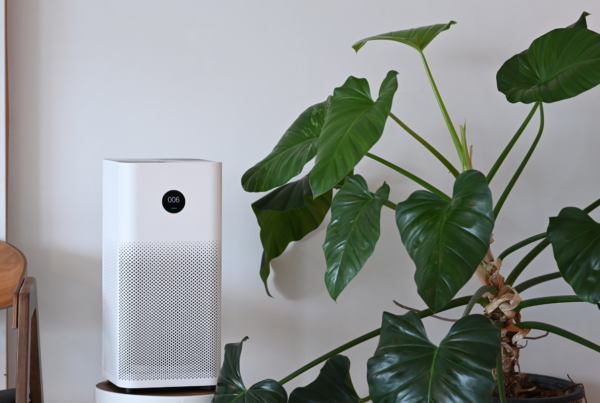
Ever feel sluggish or stressed at work, only to perk up completely after a quick walk outside? It’s not just your imagination. Modern office spaces, often designed for efficiency and aesthetics, can leave one crucial element behind: natural light.
Evolutionary Disconnection: Indoor Work vs. Natural Light

We evolved under skies bathed in sunlight, with light levels reaching well above 10,000 lux (a unit of light measurement). But most office environments offer a measly 100-300 lux – a fraction of what our bodies are programmed to expect (Bumgarner et al., 2021). This mismatch disrupts our natural circadian rhythms, the internal clock that regulates sleep, hormones, and alertness.
Impact on Circadian Rhythms: Workplace Conditions

Inadequate natural light in workplaces disrupts employees’ biological clocks, affecting sleep patterns and subsequently, the overall performance at work (Boubekri et al., 2015). Research even suggests a link between limited light exposure and increased stress, depression, and even cognitive decline (Faraut et al.,2020)
Shining a Light on Solutions
The good news is there are ways to combat the darkness. Here are some strategies to get your employees back in sync with natural light:


- Embrace the Outdoors: Encourage breaks outside – walks to work, lunchtime picnics under the sun, or even standing meetings on balconies.
- Mimic the Sun: Implement lighting systems that mimic natural light’s temperature and intensity (around 300-800 lux). This can significantly improve alertness and mood.
- Simulate Sunrise and Sunset: Consider installing lighting systems that adjust throughout the day, shifting from cooler, white light during peak work hours to warmer tones in the afternoon, mimicking the natural transition of sunlight.
By prioritizing natural light in your workplace, you’re not just creating a brighter space – you’re investing in the health, happiness, and productivity of your employees. After all, happy and healthy employees are the ones who truly shine.
References:
Bumgarner, J. R., & Nelson, R. J. (2021). Light at Night and Disrupted Circadian Rhythms Alter Physiology and Behavior. Integrative and Comparative Biology, 61(3), 1160–1169. Wang, S.-C., & Chern, J.-Y. (2015). Impact of Intermittent Stretching Exercise Animation on Prolonged-Sitting Computer Users’ Attention and Work Performance (C. Stephanidis, Ed.; Vol. 529, pp. 484–488). Springer International Publishing. https://doi.org/10.1007/978-3-319-21383-5_81
Boubekri, M., Lee, J., MacNaughton, P., Woo, M., Schuyler, L., Tinianov, B., & Satish, U. (2020). The Impact of Optimized Daylight and Views on the Sleep Duration and Cognitive Performance of Office Workers. International Journal of Environmental Research and Public Health, 17(9), Article 9. Benatti, F. B., & Ried-Larsen, M. (2015). The Effects of Breaking up Prolonged Sitting Time: A Review of Experimental Studies. Medicine and Science in Sports and Exercise, 47(10), 2053–2061. https://doi.org/10.1249/MSS.0000000000000654
Faraut, B., Andrillon, T., Drogou, C., Gauriau, C., Dubois, A., Servonnet, A., Van Beers, P., Guillard, M., Gomez-Merino, D., Sauvet, F., Chennaoui, M., & Léger, D. (2020). Daytime Exposure to Blue-Enriched Light Counters the Effects of Sleep Restriction on Cortisol, Testosterone, Alpha-Amylase and Executive Processes. Frontiers in Neuroscience, 13. https://www.frontiersin.org/articles/10.3389/fnins.2019.01366
Discover more from WellFit
Subscribe to get the latest posts sent to your email.



